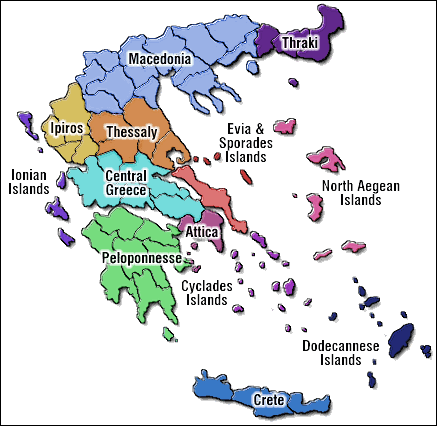All of Greece in our backyard
4th Grade Geography: chapter 4.
Geographical Regions, map of Greece (Greek educational system)
|
|
Materials for the lessonChalks
|
Layout of the classroomIt is recommended to have this lesson in the yard or in an indoors gym. If this is not possible then in the classroom. The desks can be placed on the sides for extra space to move.This lesson/play/action can also be done and repeated in next Geography chapters. So, if for example we make it for the first time, for the Macedonia Region, it can be repeated for the Peloponnese peninsula or the Greeks islands and so on. Phase 1In the first phase the lesson is done in class with the traditional way. So, the teacher gives the first knowledge and information about the geographical regions, the capitals, the rivers, lakes and the products of each Region and area of Greece.Phase 2In the courtyard, the indoors gym or the classroom.The children draw on the floor –always with the direction of their teacher- with a chalk (that is washable), Greece (or Macedonia, the Peloponnese etc) The exact shape is not important , just that we can see all the Geographical Regions of Greece i.e.The children stay together upon the Geographical Region that we are now, where their school is and they live and is considered the Base-Region. The teacher speaks out loud the regions one by one and assigns each student to name each regions’ capital (For example Kostas where is the Geographical Region of Evros and which is the Capital. The student goes to The Evros region and writes “Alexandroupolis” and finds its place on the floor. The game and the movement continues with the other regions and capitals.Phase 3When the circle of capitals is completed, the teacher can go on with the rivers, the lakes etc.
|


 SmartOWL
SmartOWL